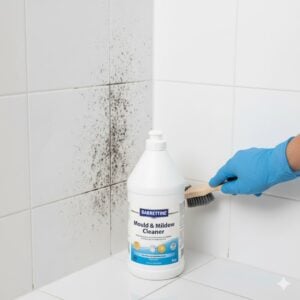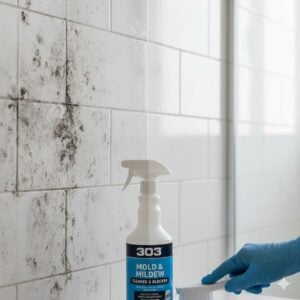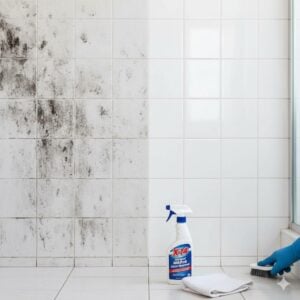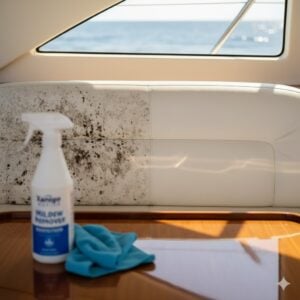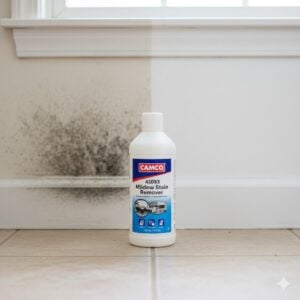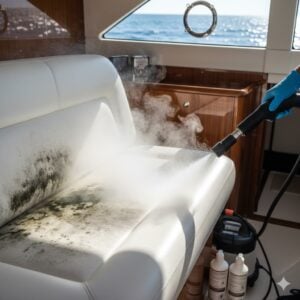We’re diving into the essential world of mold removal Dubai, unveiling 7 Safe & Effective Solutions that every homeowner should know. In a region where the climate can encourage mold growth, understanding how to tackle this issue is crucial for maintaining a healthy living environment. Let’s explore why mastering mold removal strategies is vital for your peace of mind and well-being, all in a friendly, casual tone that makes complex information easily digestible.
Table of Contents
Toggle#1. Regular Inspection and Immediate Action
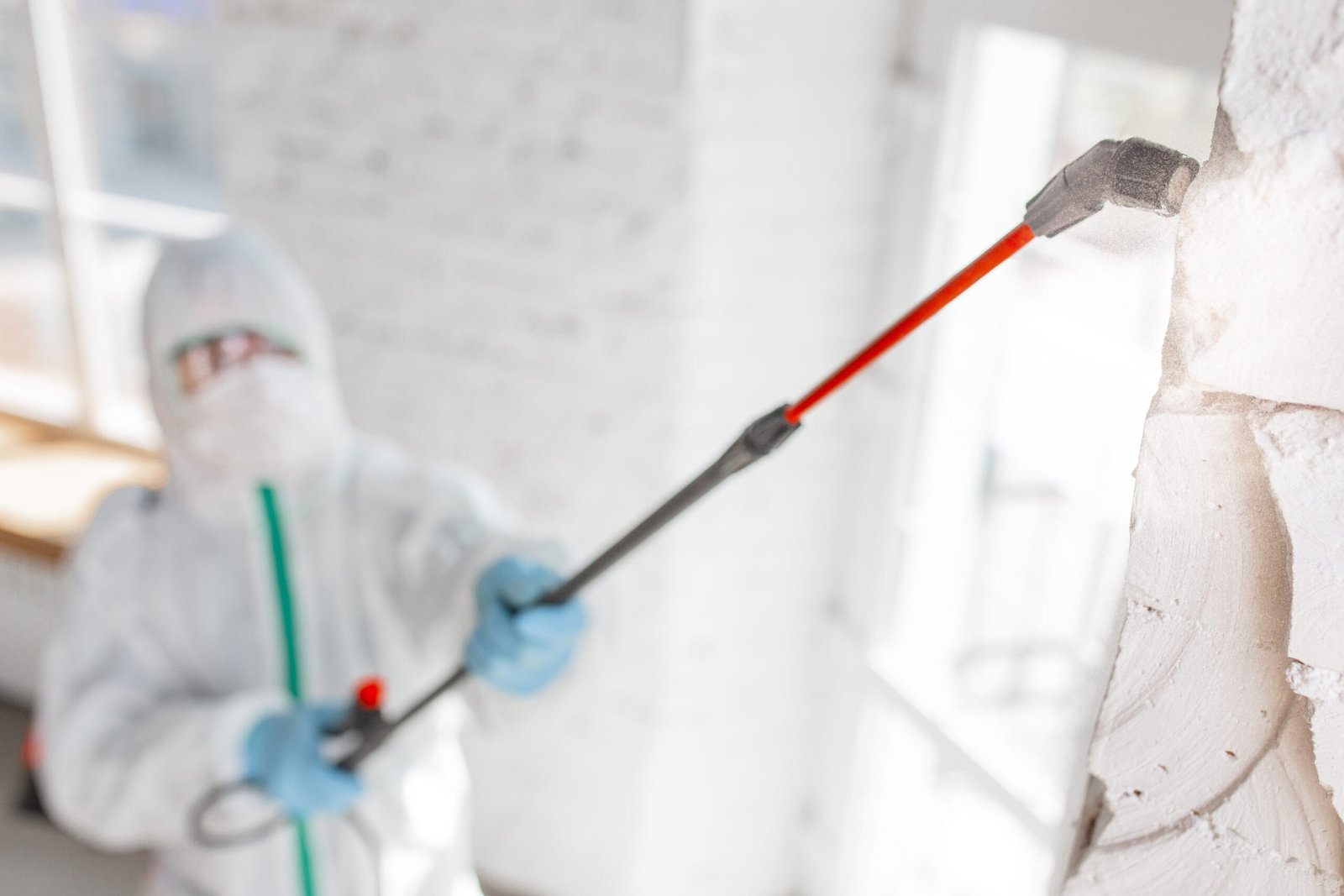
Regular inspection and immediate action are pivotal in managing mold problems effectively in Dubai’s unique climate. Mold thrives in damp, warm environments, making routine checks a necessary habit for homeowners. By identifying mold-prone areas such as bathrooms, kitchens, and basements, you can keep a vigilant eye on these critical zones. Early signs of mold include a musty smell, visible mold spores, or discoloration on walls, ceilings, and other surfaces. Spotting these signs early can be the difference between a simple clean-up and a costly remediation project.
Immediate action is equally crucial once mold is detected. The first step should involve removing any excess water or moisture sources, as mold cannot grow without moisture. Small areas of mold can often be cleaned using mild detergent solutions; however, it’s essential to wear protective gear to avoid inhaling spores. For larger infestations, or if mold is found in HVAC systems or within walls, it’s advisable to seek professional help. Addressing mold promptly not only prevents it from spreading but also protects your health and that of your family from potential respiratory issues and allergies.
To aid in the detection process, consider the use of humidity monitors to keep indoor humidity levels below 60%, which discourages mold growth. Additionally, inspecting after events like leaks, floods, or periods of high humidity can preempt mold formation. Regularly cleaning and drying damp areas, fixing leaky pipes, and ensuring good ventilation are proactive steps to mitigate mold risks.
#2. Humidity Control – Your Best Defense
Controlling humidity is pivotal in the battle against mold growth, particularly in Dubai’s climate where high humidity levels can create the perfect breeding ground for mold. Mold thrives in environments with humidity levels above 60%, making effective humidity control not just a defensive strategy but an essential proactive measure. Here’s how you can safeguard your home:
- Use Dehumidifiers: Deploying dehumidifiers in areas of your home that are particularly prone to high humidity, such as bathrooms, kitchens, and basements, can significantly reduce moisture levels. For optimal results, aim to maintain indoor humidity levels between 30% and 50%.
- Ventilate: Ensure your home is well-ventilated. Use exhaust fans in bathrooms and kitchens to expel moisture to the outside. Regularly opening windows can also help, but be mindful of the outdoor humidity levels; avoid this during high humidity days.
- Air Conditioning: Air conditioners do more than cool your space; they reduce indoor humidity. Regularly servicing your AC units ensures they operate efficiently, keeping humidity levels in check.
- Fix Leaks Promptly: Water leaks from pipes, roofs, or windows can increase indoor humidity. Inspect your home regularly for signs of leaks and address them immediately to prevent moisture accumulation.
- Insulate Your Home: Proper insulation can prevent condensation by keeping surfaces within your home at a temperature closer to the air inside. Pay special attention to areas like the attic, pipes, and windows.
- Use Moisture-Absorbing Products: In small spaces or areas where electronic devices are not suitable, consider using moisture absorbers like silica gel packs to maintain dryness.
- Monitor Humidity Levels: Using a hygrometer to keep track of your home’s humidity levels can help you adjust your humidity control strategies as needed. It’s a simple tool that can give you a clear picture of your indoor air quality.
By following these steps, you can create an environment that’s not conducive to mold growth, protecting your home and health. For visual guidance, including a chart or diagram showing the optimal humidity levels for preventing mold growth in different areas of the house, would be beneficial.
#3. Natural Solutions for Mold Removal
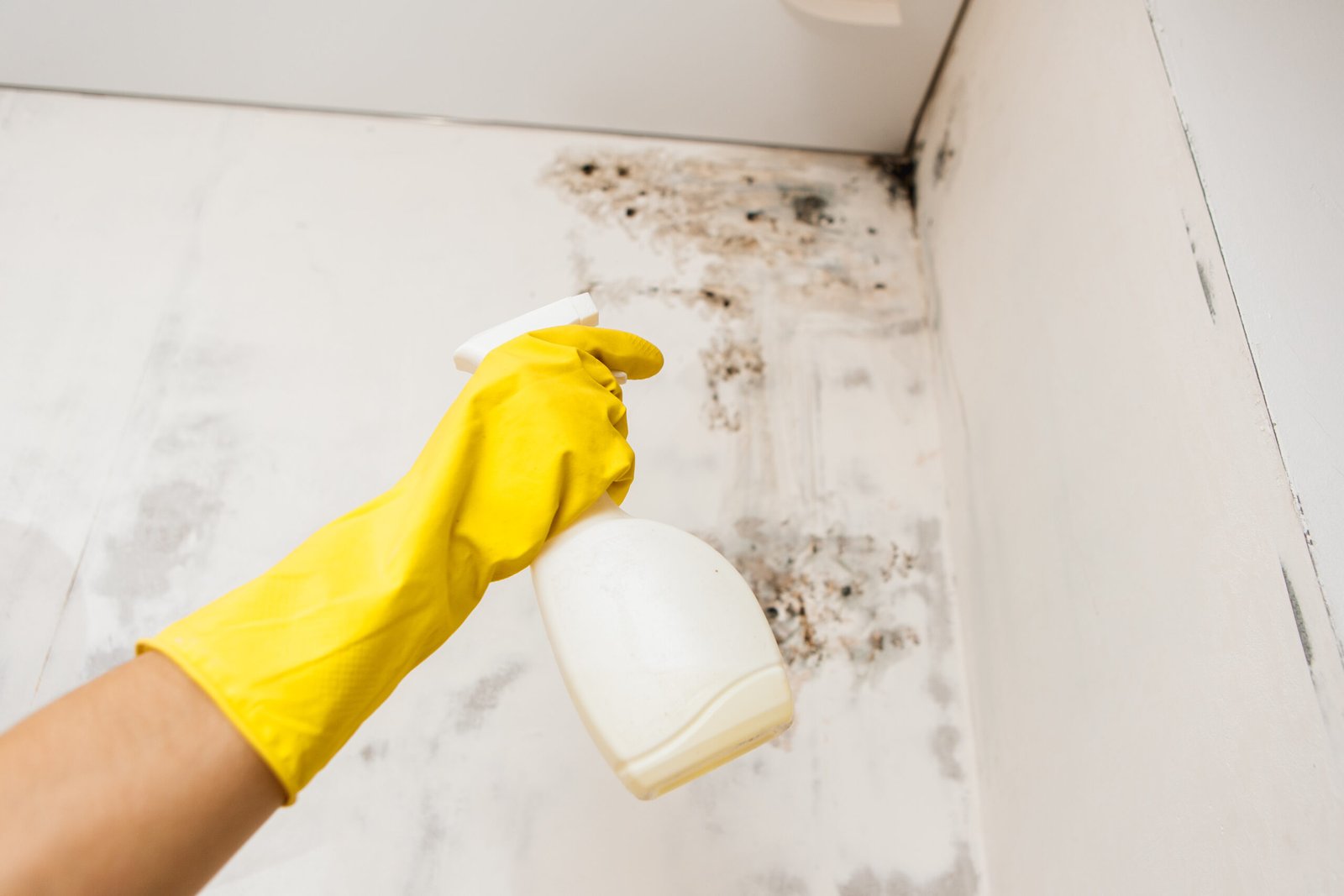
offer a safe and eco-friendly alternative to chemical treatments, especially important for homes with children, pets, or individuals with sensitivities. These methods can effectively tackle mold outbreaks without the need for harsh chemicals:
- Vinegar: Widely recognized for its antimicrobial properties, white distilled vinegar can kill up to 82% of mold species. Apply undiluted vinegar to the affected area, let it sit for an hour, and then wipe clean with water and allow the surface to dry thoroughly.
- Baking Soda: A safe and non-toxic option, baking soda not only kills mold but also absorbs moisture, which prevents future growth. Mix a quarter tablespoon of baking soda with water in a spray bottle, shake until dissolved, spray on the mold, scrub away the mold, then rinse and dry the area.
- Tea Tree Oil Solution: Although more expensive, tea tree oil is a powerful natural fungicide and can eliminate mold spores. Mix 1 teaspoon of tea tree oil with a cup of water, spray on the affected areas, and let it dry. Do not rinse.
- Hydrogen Peroxide: A 3% hydrogen peroxide solution can be applied to moldy surfaces. Let it sit for about 10 minutes, scrub the mold away, rinse the area, and then dry it completely.
- Grapefruit Seed Extract: Similar to tea tree oil, grapefruit seed extract acts as a natural disinfectant. Mix 10 drops of the extract with a cup of water, spray on the mold, leave it to dry, and do not rinse. This method is odorless, making it a good option for sensitive individuals.
- Essential Oils: Other essential oils like clove oil have been cited for their antifungal properties. However, they should be used cautiously due to their potent nature.
Each of these natural solutions offers a way to combat mold without compromising on safety or environmental health. It’s crucial to address the root cause of mold to prevent recurrence, such as leaks or high humidity levels. For illustrative purposes, a visual guide or infographic detailing step-by-step application methods for each natural solution would enhance understanding.
#4. Adequate Ventilation – Breathe Easy
Adequate ventilation is a cornerstone of maintaining a healthy indoor environment, crucial for both preventing and combating mold growth. Mold spores thrive in stagnant air environments where moisture can accumulate unchecked. Ensuring your home or workspace is well-ventilated helps to reduce moisture levels, a key factor in mold prevention, and also dilutes any mold spores present, reducing their chance to settle and grow.
To achieve adequate ventilation, it’s important to allow for a continuous exchange of indoor and outdoor air. Use exhaust fans in high-moisture areas such as kitchens, bathrooms, and laundry rooms, ensuring they vent to the outside and not just into an attic or between walls. This will help to remove moisture at the source. In parts of the home where exhaust fans are not feasible, consider using standing or ceiling fans to help circulate air.
Opening windows can also significantly improve indoor air quality by allowing fresh air to enter and stale, potentially mold-spore-laden air to exit. However, this is dependent on the outdoor air quality and humidity levels; if the air outside is more humid than inside, opening windows might not be beneficial.
In cooler climates or during the winter, it’s still important to ensure adequate ventilation. This can be achieved through trickle vents, which allow fresh air to enter even when windows are closed, or by periodically opening windows for short bursts to exchange air without significantly affecting indoor temperature.
For homes in particularly humid climates or those with a history of mold issues, investing in an energy recovery ventilator (ERV) or heat recovery ventilator (HRV) could be beneficial. These systems provide controlled ventilation, removing stale indoor air and replacing it with fresh outdoor air, all while minimizing energy loss by transferring heat (and in the case of ERVs, moisture) between the incoming and outgoing airstreams.
In addition to mechanical ventilation, consider the layout of furniture and other items within the home. Ensure that air can freely circulate around the home, avoiding situations where furniture blocks vents or air pathways, as this can create pockets of stagnant air conducive to mold growth.
For a comprehensive understanding, a diagram illustrating an optimal home ventilation strategy, showing the placement of fans, vents, and furniture to enhance air flow, could be very informative.
#5. Professional Deep Cleaning
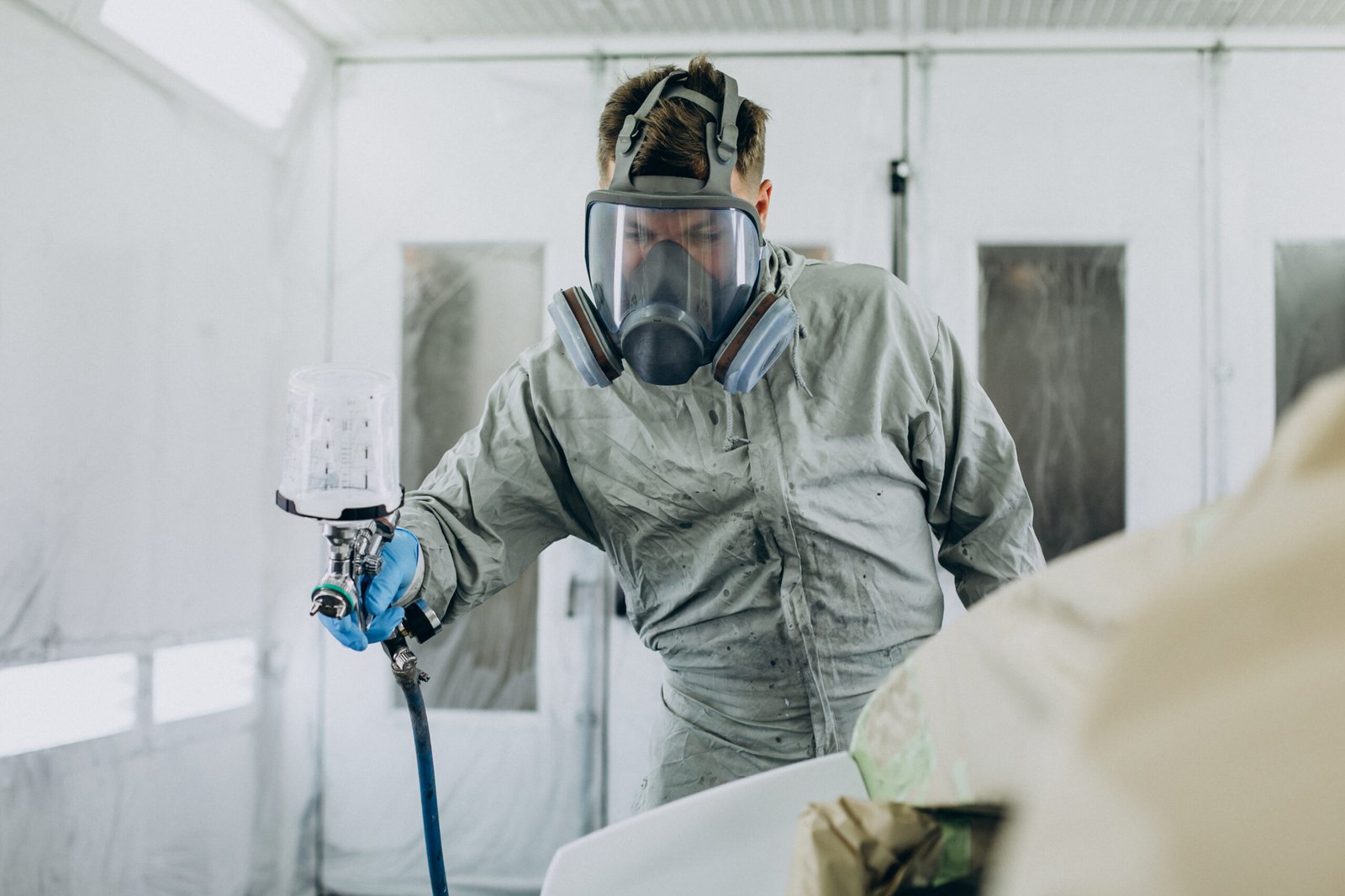
Professional deep cleaning goes beyond the surface level, addressing not just visible dirt and grime but also the hidden culprits like mold spores that can lurk in your home. While regular cleaning routines are essential for maintaining a tidy and healthy living environment, they may not always be sufficient to prevent or eliminate mold growth. This is where professional deep cleaning services come into play, offering thorough cleaning that can significantly reduce the risk of mold by targeting areas that are difficult to reach or may be overlooked during routine cleaning.
Professionals use specialized equipment and techniques to deep clean and sanitize your home, including HEPA vacuums that can capture tiny mold spores, steam cleaners for penetrating deep into carpets and upholstery, and EPA-approved fungicides that safely eliminate mold without harming your home’s surfaces or your health. They can also identify the source of moisture that contributes to mold growth, such as leaks or high humidity areas, providing recommendations for remediation.
One of the key advantages of professional deep cleaning is the expertise the cleaners bring to the task. They understand where mold is most likely to hide, such as under sinks, in crawl spaces, behind appliances, and inside air vents. By targeting these areas, they can prevent mold from spreading and causing health issues. Furthermore, they can advise on maintaining optimal indoor air quality and suggest improvements to ventilation or humidity control, critical factors in mold prevention.
For homes that have already experienced mold outbreaks, professional deep cleaning is even more critical. After mold remediation, a deep clean ensures that any remaining spores are removed, safeguarding against recurrence. This level of cleaning is particularly important in homes with individuals who have allergies, asthma, or immune system issues, as mold can pose serious health risks.
Incorporating professional deep cleaning into your home maintenance schedule can significantly impact your home’s health and longevity. Depending on your environment and lifestyle, scheduling a professional deep clean bi-annually or quarterly can help maintain a mold-free, healthy living space.
To visually support this information, an infographic detailing the professional deep cleaning process, highlighting key steps and benefits, would provide clear insights into why this service is so effective against mold.
#6. Preventative Measures for Long-Term Protection
Preventative measures are the backbone of long-term protection against mold in your home. Addressing the conditions that allow mold to thrive is more effective and less costly than dealing with the aftermath of mold growth. The key to mold prevention lies in moisture control, proper ventilation, and regular maintenance.
Firstly, identify and repair any sources of water leaks as soon as they are discovered. Leaks from roofs, windows, pipes, or appliances can create moist environments that are ideal for mold growth. Regular inspections in prone areas can prevent mold from taking hold. Secondly, maintaining a dry environment is crucial. Use dehumidifiers in humid climates or during wet seasons to keep indoor humidity levels below 60%, the threshold above which mold flourishes.
Ventilation plays a pivotal role in preventing mold by reducing moisture levels and circulating fresh air. Ensure that bathrooms, kitchens, and laundry areas are well-ventilated with exhaust fans venting to the outdoors. For natural ventilation, open windows when weather permits to allow for air exchange and to reduce indoor moisture levels.
Another preventive strategy is to store items, especially fabrics and paper, in well-ventilated areas to prevent them from becoming moldy. Avoid cluttering, as it can block airflow and create pockets of dampness. On surfaces prone to moisture, consider using mold-resistant paints or primers that contain mold inhibitors.
In areas where water exposure is inevitable, such as bathrooms and kitchens, choose materials and finishes that resist moisture and mold. Tiles, metal, glass, and mold-resistant drywall are excellent choices for these areas. Regular cleaning and drying of these surfaces will further reduce mold risk.
Lastly, landscaping and outdoor maintenance can also impact indoor mold levels. Ensure that the ground slopes away from your home’s foundation to prevent water accumulation around the building. Clearing gutters and maintaining downspouts can also direct water away from your home, reducing the risk of basement or crawlspace mold.
Adopting these preventative measures creates a hostile environment for mold, safeguarding your home and health over the long term. An illustration or flowchart summarizing these steps could greatly enhance comprehension.
#7. Smart Material Choices in Home Decor
Smart material choices in home decor play a crucial role in mold prevention, offering long-term protection while enhancing the aesthetic appeal of your space. Mold thrives in damp, poorly ventilated environments, and selecting the right materials for your home can significantly reduce the risk of mold growth. For areas exposed to moisture, such as bathrooms, kitchens, and basements, opt for mold-resistant materials that can withstand humid conditions without deteriorating.
Start with the walls, where mold-resistant paint or primer can provide an effective barrier against mold. These products contain antimicrobial agents that inhibit the growth of mold and mildew on painted surfaces. For flooring, consider materials like tile, sealed concrete, or vinyl, which resist moisture and are easy to clean. Carpets, while cozy, can trap moisture and should be avoided in areas prone to dampness.
In bathrooms and kitchens, where water is frequently used, choose non-porous materials for countertops and backsplashes, such as granite, quartz, or glass. These surfaces resist water penetration and are less likely to harbor mold. For cabinetry, consider solid wood, metal, or high-pressure laminate, all of which are more resistant to moisture compared to particleboard or MDF.
For window treatments, opt for materials that are less likely to absorb moisture, such as faux wood blinds or moisture-resistant fabric shades. In furniture selection, prioritize pieces made from metal, plastic, or sealed wood over upholstered items, as these materials are less likely to retain moisture and develop mold.
Additionally, incorporating plants into your home decor can improve indoor air quality by absorbing toxins and excess moisture. Choose indoor plants known for their air-purifying properties, but be mindful of overwatering, as it can contribute to humidity levels.
Implementing these smart material choices not only minimizes the risk of mold growth but also ensures that your home decor remains beautiful and durable over time. For a clearer understanding, a visual comparison chart showcasing mold-resistant materials versus traditional materials could greatly aid in material selection.
Why Bio-On is Your Go-To Mold Removal Dubai
Smart material choices in home decor play a crucial role in mold prevention, offering long-term protection while enhancing the aesthetic appeal of your space. Mold thrives in damp, poorly ventilated environments, and selecting the right materials for your home can significantly reduce the risk of mold growth. For areas exposed to moisture, such as bathrooms, kitchens, and basements, opt for mold-resistant materials that can withstand humid conditions without deteriorating.
Start with the walls, where mold-resistant paint or primer can provide an effective barrier against mold. These products contain antimicrobial agents that inhibit the growth of mold and mildew on painted surfaces. For flooring, consider materials like tile, sealed concrete, or vinyl, which resist moisture and are easy to clean. Carpets, while cozy, can trap moisture and should be avoided in areas prone to dampness.
In bathrooms and kitchens, where water is frequently used, choose non-porous materials for countertops and backsplashes, such as granite, quartz, or glass. These surfaces resist water penetration and are less likely to harbor mold. For cabinetry, consider solid wood, metal, or high-pressure laminate, all of which are more resistant to moisture compared to particleboard or MDF.
For window treatments, opt for materials that are less likely to absorb moisture, such as faux wood blinds or moisture-resistant fabric shades. In furniture selection, prioritize pieces made from metal, plastic, or sealed wood over upholstered items, as these materials are less likely to retain moisture and develop mold.
Additionally, incorporating plants into your home decor can improve indoor air quality by absorbing toxins and excess moisture. Choose indoor plants known for their air-purifying properties, but be mindful of overwatering, as it can contribute to humidity levels.
Implementing these smart material choices not only minimizes the risk of mold growth but also ensures that your home decor remains beautiful and durable over time. For a clearer understanding, a visual comparison chart showcasing mold-resistant materials versus traditional materials could greatly aid in material selection. Caption for chart: “Comparison Chart of Mold-Resistant Materials for Home Decor”.
Conclusion
Effectively combating mold in Dubai requires a proactive approach, focusing on prevention, early detection, and professional intervention. By employing the strategies discussed, from controlling humidity to making smart material choices in home decor, you can significantly reduce the risk of mold growth in your home. Remember, the key to a mold-free environment lies in maintaining it with regular care and not waiting for problems to escalate. For personalized advice and professional mold remediation services, don’t hesitate to contact the Bio On team. Reach out to us via the WhatsApp button for a free consultation, and take the first step towards securing a healthier, mold-free living space.








